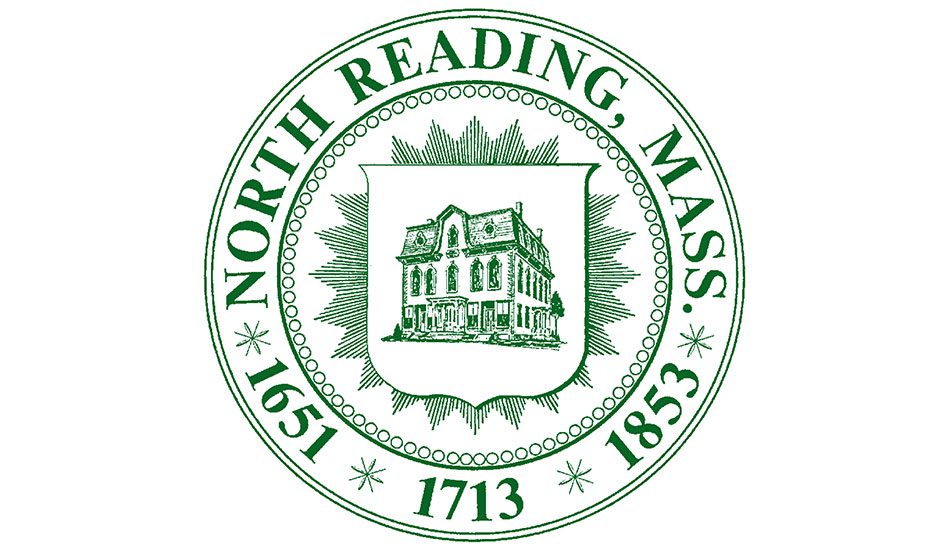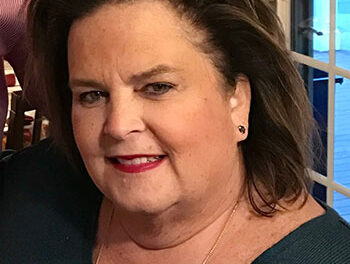By NEIL ZOLOT
NORTH READING — The three elementary school principals presented their School Improvement Plans (SIP) for the 2024-25 academic year at the Oct. 28 School Committee meeting, including retiring Little School Principal Christine Molle.
“It was certainly bittersweet working to develop our School Improvement Plan for my final year,” she said. “Each year, the goals we identify and the plan we develop creates a focus for the year, and the School Council of faculty, parents and a community member has an opportunity to provide input from their perspectives. It is a collaborative effort that is vital in doing this important work required each year.”
Molle continued, “As I reflect on the last 15 years as principal, I have had the pleasure of working with an outstanding faculty and dozens of parents and community members that have taken time out of their busy lives to volunteer for the School Council. The work will continue long after I am gone and I am confident that the Little School will continue to thrive for years to come.”
The Little School SIP outlines three areas of focus: Teaching and Learning, Student Services, and Diversity, Equity, Inclusion and Belonging (DEIB).
There are two Teaching and Learning goals: to improve achievement for all students in English Language Arts (ELA)/Literacy (baseline vs. End of Year (EOY) data) to ensure that 85% of students will meet their “typical annual growth” in reading as evidenced by the EOY data and improve achievement for all students in math (baseline vs. EOY data) to ensure that 70% of students will meet their “typical annual growth” in math as evidenced by the EOY data.
The Executive Summary of the SIP explains: “In addition to using data to drive our decisions for Teaching and Learning Goals, we continue to consider the impact of a Universal Design for Learning (UDL), school attendance and new curriculum. Well-planned lessons to meet the needs of all learners, along with ensuring that students are present in the classroom provides an opportunity for consistent participation, student engagement and the ability to build upon previously learned content and skills.
“A quality curriculum (i.e. Wit and Wisdom) creates a foundation for deeper understanding, skill development and overall academic success. New curriculum can significantly impact student outcomes by providing updated, relevant content that aligns with current educational standards and prepares students for future challenges.”
The Executive Summary also indicates class size is related to the Teaching and Learning Goals. “We have considered the impact of class size and student to teacher ratio,” it reads. “Last year, all class size targets were met (based on the School Committee’s target size for Kindergarten-Grade 5). This year we have met all class size targets at all grade levels except for Grade 1. As we look to the future, it will be important to maintain these optimal class sizes to ensure a safe and supportive learning environment where students receive personalized attention and tailored instruction.”
The Student Services goal at the Little School is to focus on continuing the expansion of the Massachusetts Tiered System of Supports (MTSS) Tier 1/Tier 2 instruction in Kindergarten through Grade 5 in order to optimize outcomes for all students. The faculty and staff will collaborate and discuss instructional strategies, share best practices and identify/utilize all available data, school personnel and resources to best meet the needs of our students.
“Interventions are provided based on data and students receive timely and appropriate support in flexible groupings to address their needs,” the Executive Summary explains. “Our action steps expand this goal to look at how best to support learning in reading, math and social emotional learning using the MTSS model. During the What I Need (WIN) block in Grade 4, eight students will receive high-dosage tutoring in math.”
The DEIB goal is to establish and implement a comprehensive equity-walkthrough framework, ensuring a consistent commitment to equitable practices, cultural responsiveness and inclusivity in the classroom, as defined by NRPS 2025 and the NRPS practices in order to create an environment where every student feels valued, respected, and empowered to succeed academically and socially, regardless of their background or identity.
“DEIB will more fully engage our families in the culture of the school through opportunities to share diverse perspectives and insights, enriching the educational experience by creating a more inclusive environment for all students,” the Executive Summary reads. “A family Heritage Night is planned for February 2025 and will provide families an opportunity to share their heritage and culture. This event is designed to strengthen students’ understanding and acceptance of diversity while promoting a sense of belonging within the school community. All school communication has been translated into a variety of languages and emailed to families. Translators have also been available to assist parents at meetings (i.e. Back-to-School Night, Parent/Teacher Conferences).”
Molle added she has taken some time to address chronic absenteeism, defined as missing 18 or more days. She looked at that as 6 days per trimester. “I’ve monitored ordnance pretty closely, but it’s not just about being absent,” she reported. “It affects achievement. Every day missed, a child falls behind and has to catch up.”
Molle also said she’s met with parents to try to determine causes to solve the problem. “It’s about keeping connections open,” she said. “Sometimes you don’t know what’s going on at home.”
Batchelder SIP
The Batchelder School SIP, outlined by Principal Michael Maloney, also designates Teaching and Learning, Student Services and DEIB “core areas.”
“Our aim is to have a high percentage of students meet their assigned targets in both ELA and Math,” its Executive Summary reads regarding Teaching and Learning. “We have written our goals to focus on student growth and learning, utilizing the annual growth target metrics. This approach allows us to create personalized learning plans that ensure a full year’s growth supported by a year’s worth of instruction.”
Referring to Student Services it adds: “To address the needs of students requiring interventions, we are strengthening Tier 2 (targeted intervention) instruction within the classroom. This strategy enables teachers and support personnel to help students reach their annual growth targets without the need for pull-out interventions. Our Tier 2 interventions encompass not only academic support but also address behavioral and social-emotional needs.”
It continues: “To support our DEIB goal, we are implementing professional development for all staff, including paraprofessionals, focusing on specific culturally responsive teaching practices. In collaboration with our multi-district coordinators for DEIB and UDL, we have developed a framework for classroom walk-throughs and feedback. This will enhance our Culturally Responsive Teaching and Learning best practices. These strategies help to create a more inclusive, equitable, and effective learning environment that supports the growth and success of all students.”
Maloney also told the School Committee that another goal is for all students to know all teachers in the school to ease transitions between grades.
Hood SIP
The Hood SIP, presented by Principal Dr. Glen McKay, refers to Teaching and Learning, Student Services and DEIB as the “Big Rocks” as outlined in North Reading Public Schools 2025 – A Strategy for the Future plan. “Our site-based decision-making model demonstrates a commitment to the values behind site-based decision-making,” McKay said. The School Improvement Plans, specifically the collaboratively developed goals drive my actions for the year and it is great to have varied lenses and experiences associated with the decision-making on this important document.”
The Hood’s Teaching and Learning goals are to improve achievement for all students in ELA/Literacy based on baseline vs. EOY data for 85% of students to score on or above grade level (Tier 1), 13% of students will score one grade level below (Tier 2), and 2% will score 2 or more grade levels below (Tier 3) and improve achievement for all students in math based on baseline vs. EOY data with 85% of students scoring on or above grade level (Tier 1), 13% of students scoring one grade level below (Tier 2), and 2% scoring 2 or more grade levels below (Tier 3) for all students taking the math diagnostic in grades 3-5.
“To accomplish this goal, the school staff continues to implement co-teaching practices, flexible grouping opportunities, MTSS, general education reading, guided reading, and small group instruction,” the Hood SIP Executive Summary reads. “We have updated families on our shift in practice towards establishing fluidity within tiered interventions as well as instructional practices. Within our MTSS framework, supplemental, targeted reading instruction is provided to students who perform below relevant benchmarks. Students in Tiers 2 and 3 receive additional small group instruction in their identified areas of instructional need. As a district initiative we have started the process of implementing UDL, an educational framework based on research in the learning sciences, including cognitive neuroscience, that guides the development of flexible learning environments and learning spaces that can accommodate individual learning differences.”
“I’m pretty proud of the work we did to keep the baseline measure where it is,” McKay said.
Under Student Services the Executive Summary reads: “In alignment with NRPS 2025, the Hood School implemented the disabilities awareness curriculum through Understanding Our Differences (UOD), a nationally recognized, educational program that teaches elementary school children to develop understanding and respect for fellow students and others with physical, sensory, or developmental disabilities. UOD is a disability awareness curriculum that we are utilizing to teach our 3rd, 4th, and 5th graders. After a successful pilot program in Grade 3 during the previous school year we have expanded this program in order to have our students participate in two sessions per grade level. The program’s goals are to foster respect, acceptance, and compassion for people of all abilities. Furthermore, it reinforces our school goals and aligns with our school philosophy of focusing on safety, responsibility, respect, and kindness. The school implemented the Understanding Our Differences curriculum as follows: 3rd grade – Deafness/Hard of Hearing, Blindness/Low Vision; 4th grade – Physical Disabilities, Learning Disabilities and 5th grade – Autism, Intellectual Disabilities. Our Student Council also researched various identified days to serve as learning days in the domain of differences. The recognized days are as follows: Asthma Day, World Accessibility Day.”
Under DEIB it continues: “Hood will increase the use of student and community voices in decision-making through the development or implementation of practices/guidelines that promote said practices. As a faculty we began the year by defining student voice and collecting baseline data relative to the use of student voice in decision making. The leaders of the student voice study group report that the team defined student voice and developed a presentation to share with the entire school staff as a means to help the school leadership as well as the teaching population to gain a deeper understanding of the benefits of soliciting and utilizing student voice including a list of current practices and suggested best practices, as well as the following promotes engagement at every level; builds trust with teachers; addresses equity in the classroom and contributes to student success. Lastly, students are better prepared to make responsible decisions, advocate for themselves, and decide their own course of action when they get to practice using their voice in the classroom throughout their K-12 education.”
“If there’s an opportunity where students can participate and take ownership, you’ve got to take advantage of that,” McKay feels.
Safety protocols
Safety was addressed in all three SIPs. “The elementary schools have been assigned a School Resource/Liaison (SRO) to assist with events that may occur during the school day,” the Little SIP reads. “Local administrators continue to work with the superintendent to develop building-specific plans through the use of identified protocols and procedures. Each school has developed a building specific plan, action guides, crisis response teams, and contact information/communication procedures (in alignment with School Committee and police/fire policies and procedures). The Police Department is committed to working with the School Department to provide and maintain a safe and secure environment which is conducive to learning within the schools.”
The SIP also reports in 2023-24 they completed annual safety training of staff, including fire drills, lockdown/shelter-in-place, fire safety, cybersecurity and bus evacuations; presented (through the Community Impact Team and School Resource Officer) an Anti-Vaping presentation to fifth grade over the course of four weeks, visited off-site locations with district administration to consider locations for emergency evacuations and discussed procedures for dismissing students in an emergency situation.
“The North Reading Public Schools Administrative Council, along with school representatives, met with the local police and fire departments for an initial day long overview of the School Threat Assessment and Response System (STARS) presented by the Northeastern Massachusetts Law Enforcement Council (NEMLEC),” the Hood SIP reads. “A memorandum of agreement has been signed between the council and the school system to coordinate their violence prevention and response efforts through STARS in order to provide a safe, orderly, and secure school environment conducive to learning.”
The Batchelder SIP adds: “School safety and discipline are paramount at the school. Along with internal staff and student training, we partner with the North Reading Police and Fire Department to run drills and participate in public safety presentations to promote student safety. Our school resource officer and community outreach personnel work with our students to cover topics such as cyber security, making healthy choices, and bullying prevention.”





